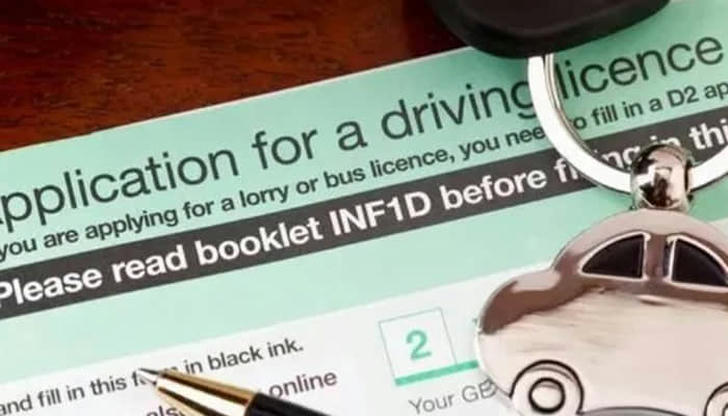9 Factors That Impact Car Insurance Rates the Most

Car insurance companies use specific traits, called rating factors, to calculate premiums. These factors include age, location, driving record, credit score, and more. The general rule? The lower your risk, the lower your premium. Certain factors, like your driving history or vehicle type, can significantly affect costs, while others, such as gender or marital status, have a smaller impact. Below, we’ll explore the nine most common factors insurers consider.
Driver-Based Rating Factors
Insurance companies assess personal details about drivers to gauge risk. Some of these factors change over time, while others are more fixed.
1. Age
Age plays a huge role in insurance costs, especially for younger drivers. Teen drivers face the highest premiums, often paying over $5,500 more annually than drivers in their 50s. This is because data shows teens tend to drive more recklessly and have more accidents than any other age group.
·When do rates improve?
Premiums typically start to drop at age 20 and decrease further by 25. Rates are lowest for drivers in their mid-50s but begin to rise again for drivers over 70.
2. Driving record and claims history
Your driving history is a clear indicator of your risk as a driver. Past tickets, DUIs, or reckless driving charges can significantly increase premiums. Similarly, a long history of insurance claims, whether filed by or against you, signals risk to insurers and drives up costs.
·Experience matters too.
The more years you’ve been driving, the less likely you are to make costly mistakes. Newer drivers typically pay more for insurance, while experienced drivers enjoy lower rates.

3. Credit score
A credit score is another major factor that many people overlook. Data shows drivers with poor credit are more likely to file claims, and their claims tend to cost more. Drivers with poor credit can pay over $1,500 more annually for car insurance compared to those with excellent credit.
·Exceptions: States like California, Hawaii, and Massachusetts have banned or limited the use of credit scores in determining insurance rates.
4. Location
Where you live impacts your rates, from state regulations to local risks. For instance, Michigan’s no-fault insurance laws and mandatory unlimited Personal Injury Protection (PIP) coverage make it the most expensive state for car insurance, with average premiums exceeding $2,000 annually.
Insurers also assess risks at the ZIP code level. Urban areas with higher traffic, crime rates, or natural disaster risks generally have higher premiums than rural areas.
5. Other personal demographics
Insurance companies also may take gender, marital status, and occupation into account when rating policies, but these factors are weighed less heavily than the factors outlined above. Still, it’s worth looking at how average premiums compare with these factors in mind.
·Gender
Young male drivers typically pay more than their female counterparts, as they’re seen as higher risk. For teens, the difference can be as much as $754 annually.
·Marital Status
Married drivers tend to have slightly lower rates since they’re statistically less likely to file claims.
·Occupation
While occupation usually has minimal impact, some jobs are associated with lower risk, and certain professional organizations.

Vehicle-Based Rating Factors
Unlike personal factors, you have more control over vehicle-based factors. Making smart decisions about your car and coverage can help lower your premiums.
6. Coverage levels and deductibles
The more coverage you carry, the higher your premiums. For example, opting for full coverage rather than minimum liability insurance can increase your annual cost by over $1,000. Adjusting your deductible (the amount you pay out-of-pocket in case of a claim) can also impact your rate—higher deductibles often mean lower premiums.
7. Vehicle type
Insurance costs vary depending on the car you drive. Luxury or sports cars are expensive to repair or replace, leading to higher premiums. On the other hand, older, more affordable vehicles typically cost less to insure.
8. Annual mileage
How much you drive annually influences your premiums. Drivers who travel fewer than 7,500 miles per year often pay less than those logging over 15,000 miles annually. On average, the cost difference is about $92 per year.
9. Ownership status
Whether your car is owned, leased, or financed affects your premiums. Leased or financed vehicles often require full coverage, which is more expensive, while fully owned vehicles allow more flexibility in coverage options.

Tips to Save on Car Insurance
While you can’t change some factors, adopting smart habits can help you lower your premiums.
1. Shop Around
Insurance rates vary widely between companies. Get quotes from multiple providers to ensure you’re not overpaying for your coverage.
2. Be Selective with Claims
Filing claims can raise your rates for years. If the cost of repairs is close to your deductible, consider paying out-of-pocket instead of filing a claim.
3. Choose the Right Coverage
If your car is worth less than $4,000, dropping collision and comprehensive coverage might save you money. However, always maintain continuous coverage to avoid penalties. If you don’t own a car but still drive occasionally, consider a non-owner policy to stay insured.
4. Take Advantage of Discounts
While discounts alone won’t drastically lower your rates, they can help. Common options include multi-policy discounts for bundling auto and home insurance or professional association discounts.
By understanding how insurers calculate premiums and taking proactive steps, you can find ways to save on your car insurance while still getting the coverage you need.
